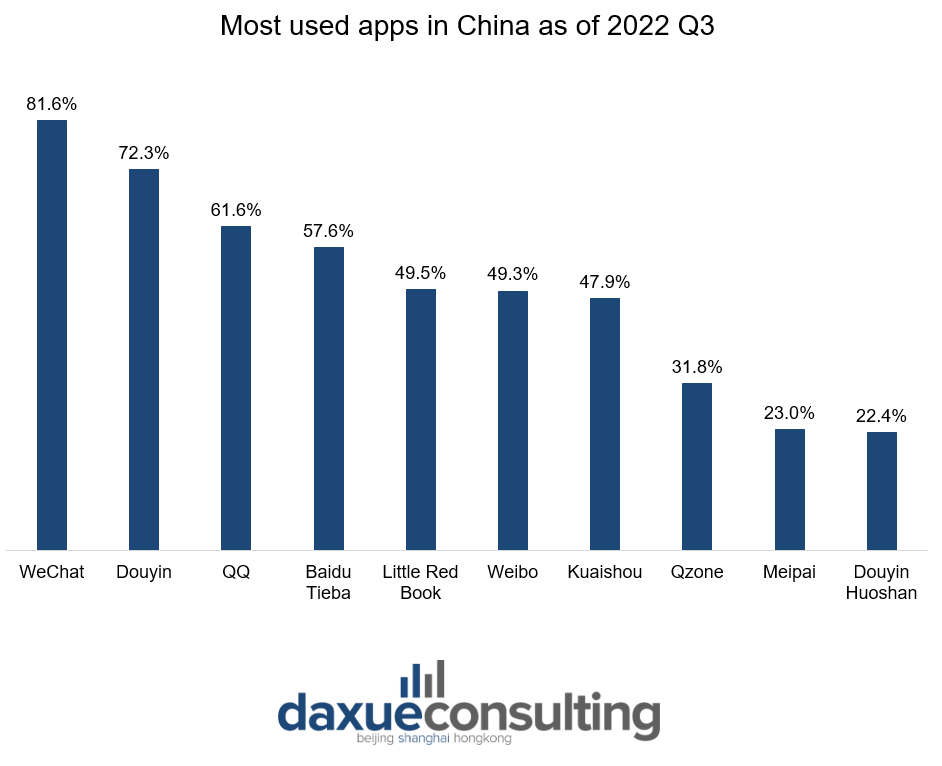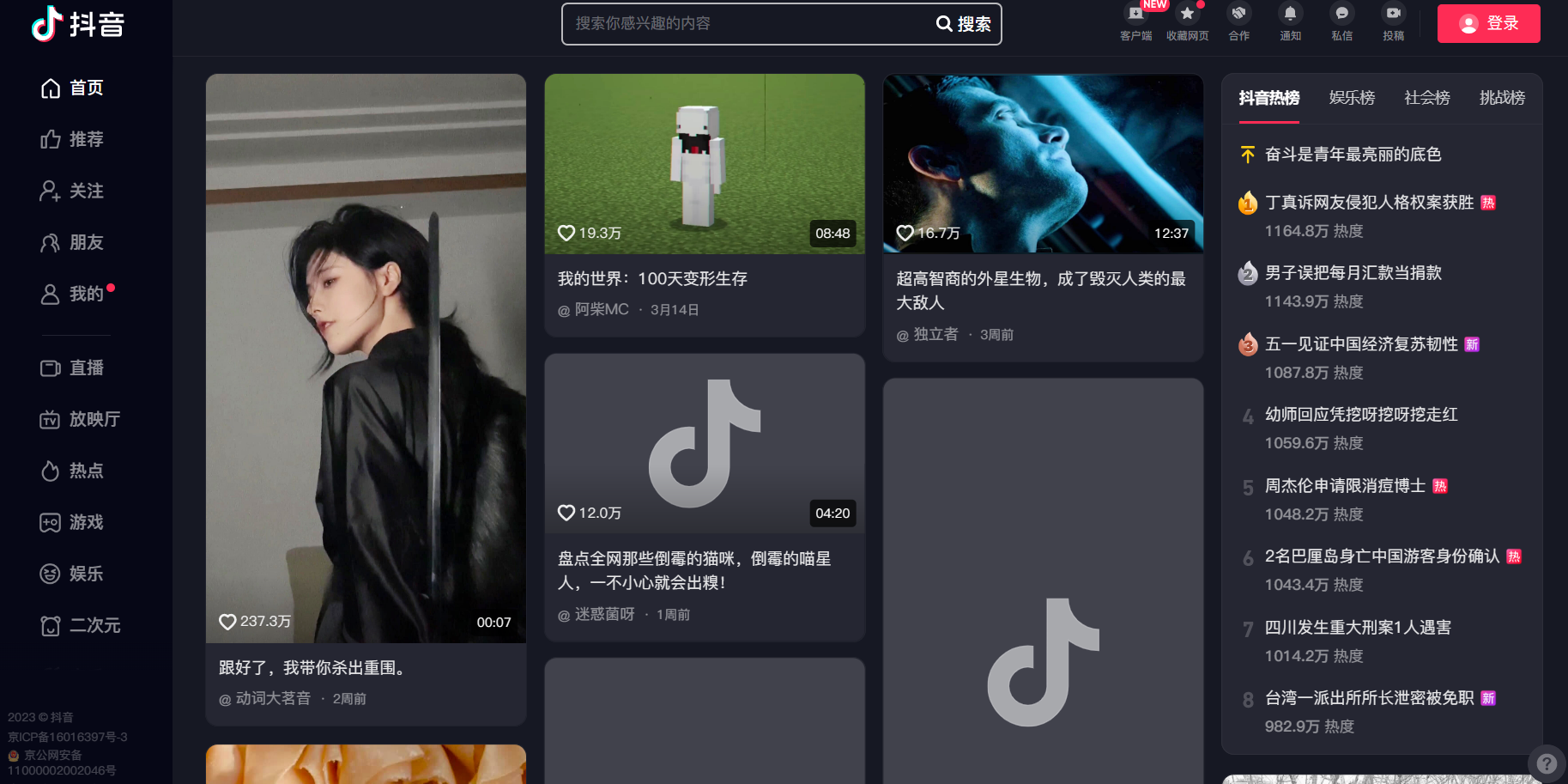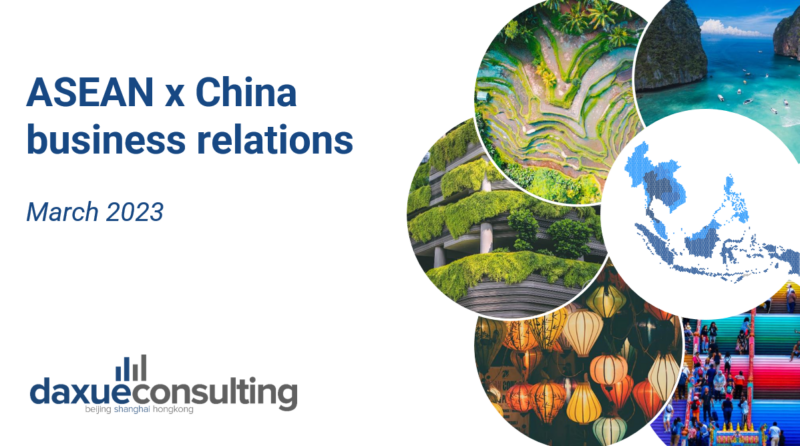For most companies, content marketing in China is a matter of survival. In the saturated Chinese market, only by attracting consumers’ attention with eye-catching advertisements is it possible to register positive income in the company.
Developing a successful content marketing strategy calls into question the types of content brands should focus on producing. Various options should be considered, including videos, social media posts, blogs, storytelling, hashtags, and QR codes, each of them being more effective for targeting specific consumer segments.
Best platforms for B2B content marketing in China
While in the West the main platforms for B2B marketing are LinkedIn and Google, China uses different virtual spaces. Most of the information flow within China goes through the search engine Baidu (百度) and the online question-and-answer platform Zhihu (知乎). Therefore, companies wanting to enter China’s markets should learn how to best leverage these platforms.
Baidu
In 2022, Baidu is the leading search engine in the Chinese market, with 55.8% of the market share. The company operating it also offers other services, like Baidu Zhidao (a Q&A platform like Yahoo! Answers), Baidu Baike (an information-sharing platform, similar to Wikipedia), and Baidu Baijiahao, a platform tailored for content creators to assist them in the creation, publishing, and monetization of their content.
Baijiahao is Baidu’s app to focus on for content marketing. Not only does it share information with Baidu’s 12 other apps – including the ones mentioned above – but also ranks high in Baidu’s Search Engine Result Pages (SERPs). Furthermore, it is linked to third parties’ social media like Weibo and WeChat, hence making it easier for readers to share content.
Producing good content on this platform is an excellent start to building brand awareness.
Zhihu
As of 2022 Q4, Zhihu reached 13 million monthly subscribers on average and 100.7 million active users, making Zhihu one of China’s largest online content communities. Based on a Q&A setup, Zhihu connects companies, content creators, and business partners, enabling friendly interactions and sharing of information. Additionally, Zhihu offers opportunities for businesses to directly reach out to consumers, build a reputation, and assess their credibility within the audience.
Registration to this platform requires a business account with a company incorporated in China. These stringent restrictions allow better control over the flow of information, preventing the spread of misleading or fake news. As a result, Zhihu has become a strategic tool for building an effective content marketing strategy in China.
Ranking high in SERPs
Ranking high in SERPs is one of the main goals of a successful content marketing strategy. Zhihu, just like other apps operated by Baidu, is typically favored in this regard. However, to better perform without relying solely on these platforms, businesses should consider choosing between a Pay-Per-Click (PPC) or Search Engine Optimization (SEO) strategy.
Unveiling the best platforms for successful B2C content marketing in China
When planning a content marketing strategy addressed to consumers, having a clear idea of China’s social media landscape is a must.
According to Statista, China’s most used app is WeChat (81.6%), followed by Douyin (72.3%) and QQ (61.6%). The data refer to the percentage of internet users who used the mentioned apps during the third quarter of 2022.

WeChat: a must-have for a B2C marketing strategy
When it comes to business, WeChat is crucial for enhancing the interaction between the company and its consumers. Posting content on WeChat has become almost a requirement for businesses due to its widespread usage.
One of the most notable tools that the platform offers for producing content is WeChat Channel. Launched in 2020, it features a short-video function similar to Douyin and includes a private section only dedicated to posts and photos shared by followed accounts and pages.
The platform also offers a method of content creation through blogging. When searching for a company’s information, consumers can visit the brand’s official page on WeChat and simply scroll through their “message” (消息) section, where they will find related articles and intriguing news.
Getting to know three of China’s most popular social media platforms
Douyin
Known as the Chinese version of TikTok, Douyin displays features that do not appear in the Western version. Besides short videos, the Chinese app also includes a livestreaming section that is exceptionally popular among young consumers. Knowing how to leverage a Douyin account would not only provide visibility, but also greatly improve a company’s profitability, thanks to the in-app purchase option. As a matter of facts, during 2022 Double Eleven, Douyin ranked first among all the live streaming e-commerce platforms. According to Statista, the share of Douyin users in China has been increasing non-stop ever since 2020.

Similar to the Western Twitter, Weibo is a platform where any user, either private or a public company, can share posts, photos, gifs, and videos and interact with others by commenting and leaving a like. Because of how simple interacting on Weibo is, this platform might also represent an important asset for discovering new companies and enhancing a B2B marketing strategy. As of December 2022, Weibo counts around 586 million users, making it one of the largest social media companies in China.
Besides providing visibility by producing content, this platform also offers options for paid advertising through banners or pop-ups.
Little Red Book
Often compared to the Western Pinterest and Instagram, Little Red Book’s main focus is the production and sharing of visual content, mainly photos, and pictures, but it is also renowned as a shopping platform. Companies can build their own users’ community by posting content, boosting interaction with users through the comment section and by uploading their products on the store’s page. According to Qian Gua’s 2022 Little Red Book Active User Trend Report, this platform counts around 200 million active users. The most popular topics concern makeup, clothes, and skincare.
Users often research these topics to discover products’ ratings, evaluations, and overall impressions, which help inform their purchasing decisions. Little Red Book impacts all the main stages of the consumer’s journey: awareness, consideration, purchasing, and advocacy. It is definitely a must-have in the content marketing strategy of any company in the beauty sector.
Mastering content strategy in China: key points to consider
1. Choosing a target audience
Having a clear idea of who the future consumers is a key consideration to make. Which platform do they use the most? What are their tastes and interests? What kind of content do they appreciate the most? The answer varies a lot depending on age, gender, and city tier. It is not necessary to be present on all platforms: it is simply a matter of choosing the right ones.
2. Deciding when and how often to post
Having a well-planned posting schedule can be useful in gaining consumers’ interest. Maintaining a regular schedule can inform users interested in a brand of when to expect new information. This approach is particularly effective for live streaming and both offline and online events.
3. Considering a long-term content marketing strategy
A long-term marketing strategy is one that spans across multiple marketing campaigns. Storytelling, for example, can be an effective option as it creates emotional investment and leaves consumers eager for the next release.
4. Creativity
Content marketing today goes beyond producing beautiful visuals, it’s about engaging with consumers in a compelling way. The purpose of a content marketing strategy is to evoke responses from consumers, by creating something entertaining and thought-provoking.
Examples of good content marketing in China: Jiang Xiaobai & KFC
Jiang Xiaobai (江小白)
Founded in 2012, Jiang Xiaobai is a brand producing baijiu (白酒), a traditional Chinese alcoholic drink.
Although the new generation is growing further away from baijiu, this brand has managed to gain popularity among young people by tailoring its products and marketing to their tastes.
One such marketing strategy involves a QR code printed on the bottle, which allows consumers to share their opinions and suggest new tagline ideas to the brand. This strategy creates a more personalized experience for the customer and narrows the gap between the company and consumers.
Hence, it is common to see people sharing photos of Jiang Xiaobai’s bottles online and commenting on the sentences printed on the tag.

KFC Crazy Thursday
Every Thursday ever since August 2018, KFC makes a price reduction on its products. However, this permanent event did not gain popularity until 2021, when the words Crazy Thursday send me 50 yuan (疯狂星期四V我50元) started creating buzz online, becoming a meme.
The rise in popularity started when the company invited celebrities to endorse the event and people to make memes on the internet. Now, every Thursday the internet is overwhelmed with memes and posts of the Crazy Thursday Literature (疯四文学), a term coined to indicate jokes, short stories, and modified song lyrics that make fun of this activity. In December 2021, KFC even organized the Crazy Thursday Literature Festival to award the funniest and most creative content creators. Capitalizing on its popularity, KFC also launched the V我50元 gift cards, sold on their WeChat mini program.

What you need to know to design an effective China’s content marketing strategy
- Producing good content in China is essential to build brand awareness among both consumers and other businesses.
- To produce B2B content, it is important to be familiar with the search engine Baidu and understand how to rank high in SERPs. In this sense, it is necessary to make a choice between SEO- or PPC-oriented marketing.
- In addition to its search engine, Baidu also owns other products that might be useful for publishing B2B content, like Baidu Baijiahao. The Q&A platform Zhihu is very popular nowadays as well and ranks high in SERP.
- When producing consumer-oriented content, it is useful to have a clear idea of the Chinese social media landscape. Companies should know the features and opportunities offered by WeChat, Douyin, Weibo, and Little Red Book, which are some of the most popular apps as of 2022 Q3.
- The most effective content is the one tailored for a specific target audience. Based on that, it might be worth considering a long-term content marketing strategy in China which takes account of the time and regularity of posting. Creativity is probably the most important element. Good visuals are not enough anymore. Content should be produced with the purpose of inducing a response in consumers.
Author: Chiara M. Barbera
Download the ASEAN x China business relations report






